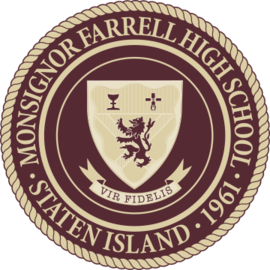On Memorial Day and Always, We Honor and Mourn All Members of the United States Military Who Have Died While Serving Our Country, Especially Our Faithful Men
Service above self is a core value of Monsignor Farrell High School. Please take a moment to remember the true reason for Memorial Day, which is to honor and mourn the members of the United States Military who have died in the performance of duty while defending our country.
We especially remember four of our Monsignor Farrell brothers who made the supreme sacrifice. Kenneth Schneider '65 and Donald Tinney '67, both members of the United States Army who were killed in action in Vietnam, as well as Neal Carlock '70 and James Hicks '79, United States Navy officers who died in aviation training exercises.
They were all posthumously inducted into the Monsignor Farrell Alumni Hall of Fame, Wall of Valor in 2016, along with our other Faithful Men who died in the line of duty as members of uniformed civil service.
Vir Fidelis.
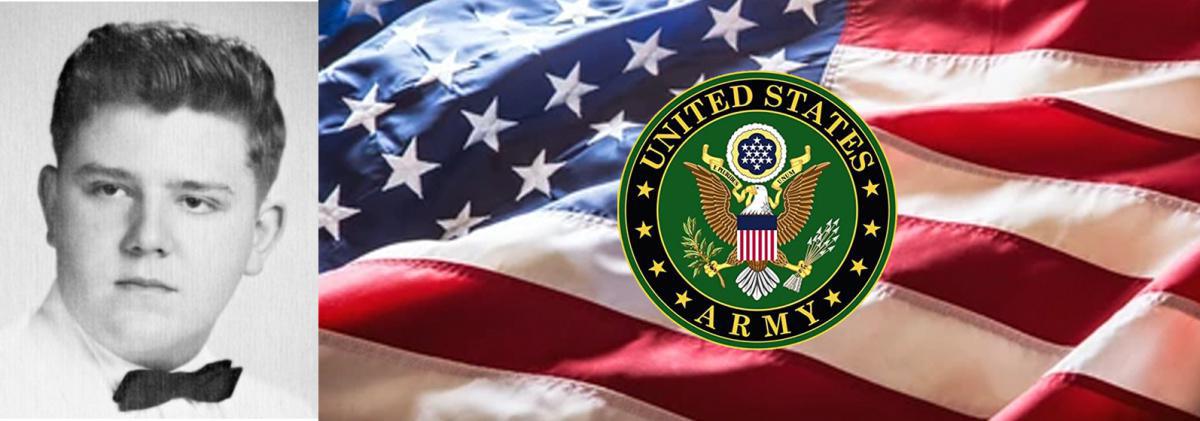
Kenneth Schneider, Class of 1965
United States Army, Specialist Fourth Class
Ken, a 1965 graduate of Monsignor Farrell High School, was a United States Army Specialist, assigned to the 4th Infantry Division.
He enlisted in the army a year after graduating from Monsignor Farrell and took his infantry training at Ft. Jackson, South Carolina. His tour of duty began on February 25, 1967. In Vietnam, he was assigned to Alpha and Echo companies, 2nd Battalion, 35th Infantry, Cacti Regiment.
Ken's first day of combat, March 12, 1967, lasted a staggering total of seventeen hours, resulting in the deaths of fourteen Cacti members, including Ken's lieutenant, Stephen Karopcyzc, who was posthumously awarded the Medal of Honor.
Ken was known by his platoon mates as a quiet and likable guy who tried his best, pulled his own weight, and did his part. Eventually, he became the company clerk and had only 13 days left in-country when the Tet Offensive broke out.
On February 11, 1968, Ken and his platoonmate Andy Cardinale went to their guard positions, knowing they would be airlifted out by helicopter the next morning to begin processing in preparation to return to the U.S. Tragically, he never made it out. Ken was killed in action in Quang Tin, South Vietnam.
Specialist Fourth Class Kenneth Schneider was killed by mortar fire that night, the 127th soldier from his battalion to die that year. His grave is on Staten Island, in Moravian Cemetery and his name appears on the Vietnam Memorial on panel number 38E, line 080.
Following his death, Ken's mother came across a book of poetry that he had written and had been too shy to show to anyone, even her. It was there she found an entry about a soldier fighting for liberty and freedom. "We kneel and pray it's over and go about our way, for gone now is the soldier and peace is here to stay."
Ken was 20 years old.
The decorations earned by SP4 Kenneth Eugene Schneider include the Combat Infantryman Badge, the Bronze Star with "V" Device, the Purple Heart, the National Defense Service Medal, the Vietnam Service Medal, the Vietnam Campaign Medal, and the Vietnam Cross of Gallantry with Palm Unit Citation.
Ken's Bronze Star with Valor Device
"For heroism in connection with military operations against a hostile force in the Republic of Vietnam. Specialist Four Schneider distinguished himself while serving as a Mortarman with Company E, 2Battalion, 35th Infantry, 4th Infantry Division.
On 11 February 1968, the firebase area of Company E came under intense mortar fire. Immediately, Specialist Schneider began returning accurate counter-mortar fire, attempting to eliminate the enemy mortar positions which were causing the firebase to sustain much damage. He continued to expose himself to the hostile in-coming mortar rounds as he sent volley after volley into the enemy positions. But in doing so, Specialist Four Schneider was mortally wounded when a mortar fell near his position.
His daring and determination materially aided the Infantrymen in countering the enemy attack. His display of courage and professionalism are in keeping with the highest traditions of the military service and reflect great credit upon himself, his unit, and The United States Army."
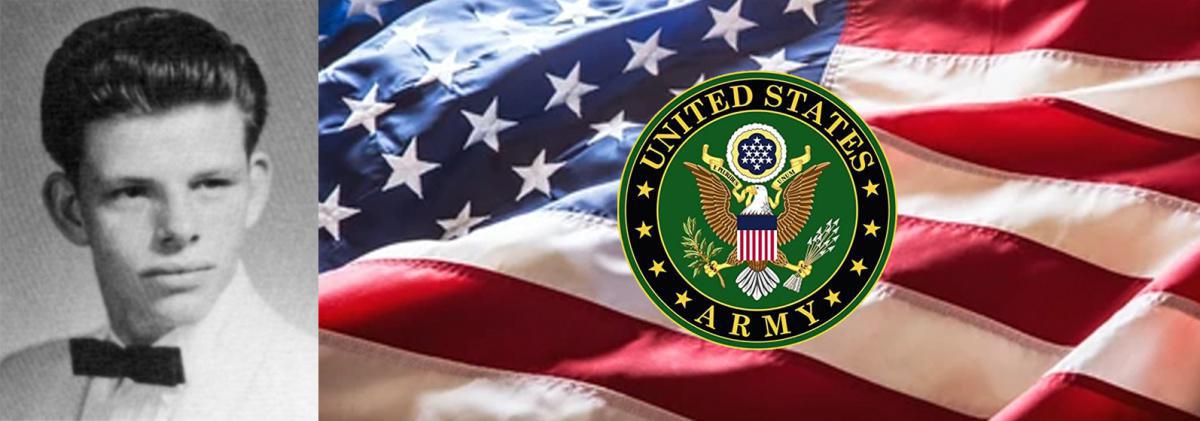
Donald Tinney, Class of 1967
United States Army, Sergeant
Don, a United States Army Sergeant, grew up in the Tottenville section of Staten Island. He was involved in sports at Monsignor Farrell and excelled in football. He was a three-year member of the varsity, and an Advance All-Star defensive tackle in his senior year when the Lions went undefeated. He also played golf.
Don graduated from Monsignor Farrell in 1967. Like his Monsignor Farrell brother Ken Schneider, he enlisted in the Army a year after graduation. After completing jump school in Ft. Benning, Georgia, Don left for Vietnam as a member of the 25th Infantry Division, Fox Company, 75th Rangers, whose duty was long-range reconnaissance.
At approximately 8:30 on the morning of April 2, 1970, Specialist 4th Class Tinney and fourteen other Fox Company men were helicoptered into Tay Ninh Province, a known Viet Cong stronghold. They immediately found themselves under a withering machine-gun attack. They beat back the assault with hand grenades, but not before Don was hit. He was immediately evacuated to a field hospital at Long Binh, where he died of his injuries twelve days later, on April 14, 1970. Don was 20 years old.
The Silver Star
For his heroic actions that day in repelling a superior enemy force, Don was awarded the Silver Star, our nation's third-highest military decoration for valor in combat, and a Purple Heart. He was posthumously promoted to Sergeant. Don also earned a Combat Infantryman Badge, a Bronze Star with Valor Device, the National Defense Service Medal, Army Commendation Medal, the Vietnam Service Medal with Bronze Star, and the Vietnam Campaign Medal.
Under Don's picture in his Monsignor Farrell yearbook is the motto he lived by, "Never Give Up," he wrote. Don Tinney never did. He is buried in Long Island National Cemetery, and his name appears on the Vietnam Memorial, panel 11W, Line 004.
"I miss my big brother every day. My big, strong, athletic brother seemed so powerful and invincible--it was no surprise that he became an Airborne Ranger. As time has marched on, I became the big sister, as Don is forever 20. I miss him, and what might have been." - Don's sister, Catherine.
Battle in Renegade Woods
Hieu Thien District, Tay Ninh Province, Vietnam
The Renegade Woods was a flat area with thick, double-canopy jungle heavily undergrown with vines. The few open areas consisted of elephant grass bisected by hedgerows and had isolated clumps of brush and a few dead trees, basically without cover or concealment. An exception was the landing zone of the Ranger team, which had two bomb craters that provided the only cover. The hedgerows and jungle areas had been heavily bunkered and provided excellent defensive positions which were very difficult to locate.
Initially, the teams from Company F (Ranger), 75th Infantry were inserted into the contact area to exploit intelligence information. The 2nd Battalion, 27th Infantry, which was preparing to begin normal operations in the same general area, was committed as a reaction force when the Rangers developed the large contact. Two companies from the 2nd Battalion (Mechanized), 22nd Infantry, were committed to the action as it expanded. The mission of the reacting forces was to conduct a ground reconnaissance of the area and to extract the bodies of the two Rangers who had been killed.

The two UH-1Hs (CENTAUR 23 AND 24) inserting Don and the Rangers into Renegade Woods on April 2, 1970. The photo was taken by CPT Paul Schierholz, Commanding Officer, Company F (Ranger), 75th Infantry on board Centaur 24.
At 0700 02 Apr 1970 F Company, 75th Infantry, was alerted to provide a Ranger team to investigate enemy activity in the Renegade Woods. At 0800, a 13-man Ranger element, led by 1LT Philip J Norton, boarded two D/3-4 Cav UH-1H helicopters. The insertion was accomplished at 0835 hours. Following standard operating procedures for Ranger insertions, there was no preparation of the landing zone.
The Rangers deployed from the helicopters and began moving west toward known enemy structures. At approximately 0840 hours a light machine gun (LMG) opened fire on the lead men at a range of ten to 15 meters. Although the LMG was destroyed with hand grenades, killing its crew, the team began taking fire from all directions. 1LT Norton decided they should withdraw to the east and attempt to maneuver around the enemy. Suppressive fires were requested from the supporting helicopters and a reaction force was requested.
The Rangers split into two elements, Team 39 under 1LT Norton moving eastward while Team 38 under SFC Floyd provided covering fire. The supporting helicopters - one AH-1G, one OH-6A, and the two insertion UH-1Hs - also were divided, with the two UH-1Hs (CENTAUR 23 AND 24) dispatched to Cu Chi to bring out a reaction force.
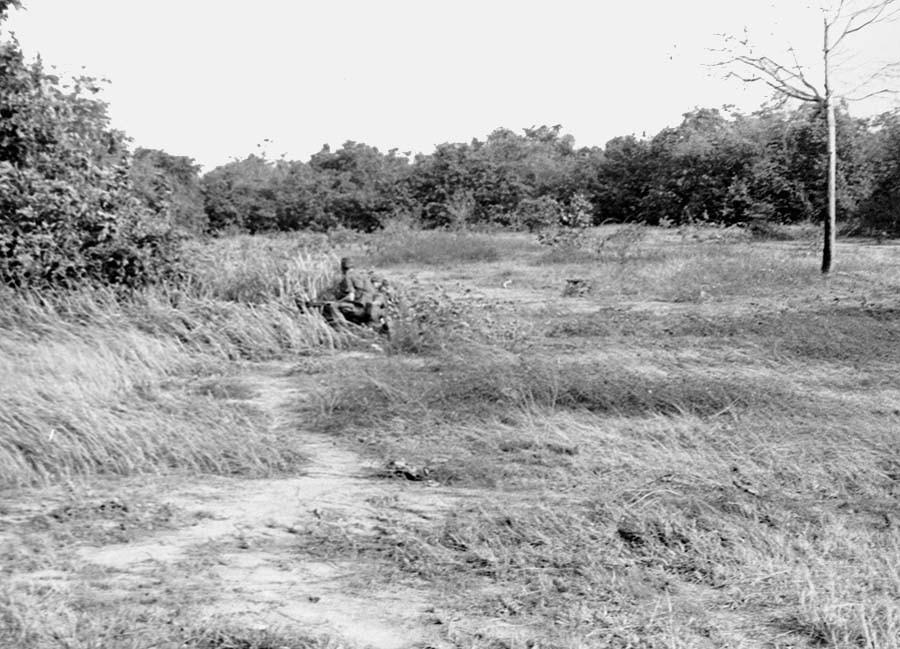
Don just after being inserted into Renegade Woods.
The situation on the ground deteriorated rapidly. Team 38 had set up in a large bomb crater which provided the only cover in the area, but a combination of small arms and RPG fire killed SFC Floyd and SGT Michael Thomas and wounded SP4 Donald Tinney. Team 39 also began receiving heavy fire from small arms and two or possibly three LMGs and withdrew to the crater. 1LT Norton had dragged SP4 Tinney to safety within the crater before requesting a reaction force, gunship support, and MEDEVAC for the three men struck by the RPG. The on-scene Cobra expended the rest of its rockets and minigun ammunition in laying suppressive fire and the OH-6A expended 600 M-60 rounds before jettisoning extra ammunition in preparation for a MEDEVAC attempt. The UH-1H helicopters reversed course and returned on-station.
By about 0920 hours the team had expended most of their ammunition and were taking small arms fire from all directions. The AH-1G and OH-6A had expended their ammunition and were making dry gun runs in an attempt to suppress the enemy fire. At 0922 hours CENTAUR 23 landed ten to 15 feet from the lip of the crater, and 1LT Norton gave his men the order to board. The UH-1H crew maintained suppressive fires while the eleven surviving Rangers boarded, and after 30 seconds on the ground, the overloaded UH-1H lifted off with maximum torque and severe vertical vibration. SFC Floyd and SGT Thomas could not be recovered. All the helicopters were running low on fuel and departed for Cu Chi, arriving there at about 1000 hours. CENTAUR 23 stopped en route near Trang Bang to administer initial first aid to SP4 Tinney and to redistribute the passengers, some of whom were literally hanging on, before landing at the 12th Evacuation Hospital.
The Ranger mission had been an expensive success - the presence of a large body of VC/NVA and base camp facilities had been confirmed. Over the next five days, Companies A, B, and C, 2/27th Inf, and Companies A and B, 2/22nd Inf, conducted operations against a well-equipped, trained, and entrenched enemy, ultimately forcing them from the area while destroying the base camp facilities, capturing large quantities of supplies and weapons, and killing at least 101 VC/NVA soldiers. The enemy forces involved were the 2nd and 3rd Battalions, 271st VC/NVA Regiment.
For a detailed account of Renegade Woods, read "Chewing Up Charlie in the Renegade Woods" from History.Net
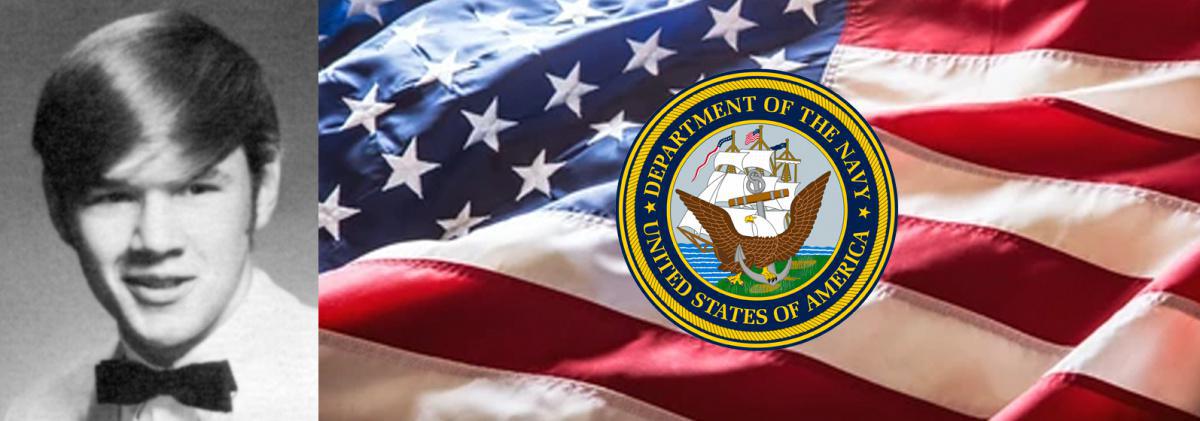
Neal Carlock, Class of 1970
United States Navy, Lieutenant
Neal Carlock grew up in the Prince's Bay area of Staten Island and attended grammar school at St. Joseph - St. Thomas.
Neal excelled in his studies while at Monsignor Farrell and was a member of the track and field team. Academically, he enjoyed the sciences, which led him to study biology at Stony Brook University after graduating from Monsignor Farrell in 1970. Eventually, Neal would follow a call to serve his country in the United States Navy.
On July 29, 1982, U.S. Navy Lieutenant Neal Carlock, assigned to Fighter Squadron 101 (VF-101), also known as the "Grim Reapers," was engaged in an F-14A Tomcat training exercise, serving as the aircraft's RIO (Radar Intercept Officer).
Shortly after taking off from NAS Oceana, Virginia Beach, Virginia, Neal's F-14 was observed in an accelerated descent. Lt. Carlock and his pilot, Lt. Anthony David Griffin, both ejected. Tragically, they did not survive.
Neal was 30 years old.

James Hicks, Class of 1979
United States Navy, Lieutenant
James David Hicks grew up in the New Dorp section of Staten Island and attended grammar school at Our Lady Queen of Peace. He continued his education at Monsignor Farrell High School where he was a diligent student and proud member of the wrestling team.
After graduating from Monsignor Farrell in 1979, Jim went on to the State University of New York Maritime College in the Bronx. Always hardworking, Jimmy was the first member of his family to graduate from college. He earned his commission in the United States Navy in 1983.
Lieutenant Hicks was then assigned to Attack Squadron 85 at the Oceana Naval Station. He served aboard the USS Saratoga in the Mediterranean Sea and participated in air operations over Libya.
On May 21, 1987, Lieutenant James Hicks was engaged in a fighter jet training exercise near Stumpy Point, North Carolina. Serving as the bombardier and navigator of an A-6E Intruder aircraft, Lieutenant Hicks was killed when the aircraft crashed during the night in a heavily wooded area at the Navy bombing range.
Lieutenant James Hicks' life was marked by his devotion to his country and family, his enthusiasm for seeing the world, and his courage to pursue his dream of serving his country in the United States Navy. The Hicks family still proudly visits his grave at Arlington National Cemetery, where he was buried with full military honors.
James was 25 years old.
